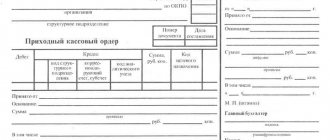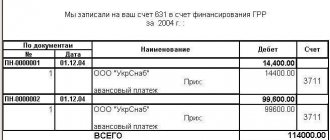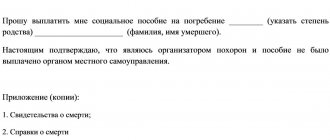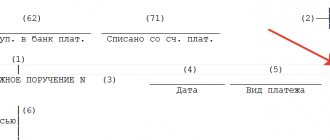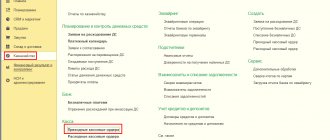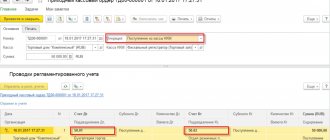Is a check required for acquiring?
The acquiring receipt is issued in two copies: one for the buyer, the other for the seller. According to current legislation (FZ-290), each organization is required to provide clients with a payment receipt, regardless of the type of activity.
That is, it is always issued when there are commodity relations between the seller and the buyer. Namely:
- when purchasing goods at a point of sale (TT);
- when paying in cafes, hairdressers;
- when ordering services;
- when purchasing online (including plane, train, theater tickets, etc.);
- when paying for subscriptions to paid content;
- when paying out lottery winnings.
If trade relations concern organizations (supply of equipment, goods in large quantities), then in addition to the payment document, you must provide the client’s company with an invoice.
It is worth noting that upon entry into force of 54-FZ, each TT is required to send data on monetary transactions to the tax authorities. This usually happens when an organization interacts with the Fiscal Data Operator (FDO).
Therefore, business owners need to have not only a payment terminal in their stores, but also an online cash register. With its help, information about each purchase is sent directly to the OFD, and then to the tax office. Then the question of whether and why it is necessary to store acquiring receipts arises by itself.
How to draw up a terminal check
In standard situations, when paying for purchases in markets, a slip receipt is printed automatically. However, there are cases in which a document needs to be created manually, and the operator does this.
Operator
Nowadays, people rarely generate a check document manually. But if an emergency occurs, for example, the terminal’s connection to the Internet fails, you can create a document on the imprinter. This device creates an imprint of the card with which the buyer pays. The procedure occurs as follows:
- A cliche signature is sent to the device with the point of receipt of non-cash funds.
- A solvency check is underway.
- The card is placed with the raised side into the machine to make an impression.
- A 3-layer document is printed, which displays all the details, including a QR code with the available information.
The imprinter will print 3 copies: one for the bank, the second for the seller, and the third for the buyer. In such a situation, the acquiring document is signed by both parties, and the funds will arrive later than usual. If a mistake is made during the transaction, the check is canceled on the spot in front of the buyer and created anew. The client can safely leave only if approved.
Terminal
Everything is simple here: the machine (terminal) automatically reads the data from the card, checking it with the cash receipt, and generates a document. Next, the payment machine prints out a slip check. In this case, the money is written off almost instantly, except in cases where there are problems with the Internet provider. This type has three main advantages:
- The seller does not have to worry about the client’s solvency. The bank will reject the transaction if there is no money in the account.
- The document is not allowed to be printed, but sent electronically by e-mail. This greatly simplifies payments to online stores.
- The electronic version of checks is easier to store. The system independently archives them on a specialized server, where all data will remain in its original form.
Failure to issue a slip check is the same offense as failure to issue a cash receipt, as it is equivalent to the so-called failure to use a cash register.
Why do you need to keep a check?
The fact is that the organization needs to maintain accounting records. An acquiring receipt is also needed to resolve disputes with the client. And in a few more cases:
- If the Z-report is lost. Tax authorities can issue a considerable fine for this. Saving a slip check will help you create a report that will reflect all income and expenses.
- When maintaining accounting records. Data on cash and non-cash transactions are reflected in different columns.
- To submit a report to the bank. A financial institution has the right to demand from its clients all slips for any period chosen by them. If you store them properly, harvesting them will take a little time. Usually banks give 3 days for this.
- To return money to the buyer. If your slip is lost, the client can provide you with his own, and you will be required to return the money. But in order to reflect this transaction in the report, you must have your payment document.
It is also important to know how to properly store acquiring receipts, because the information printed on them disappears over time. To preserve the document, make a photocopy of it and place it in a separate folder.
When paying by credit card, the terminal additionally issues a similar slip check, which confirms receipt of the goods/service and the debiting of funds from the buyer’s account.
How should slip checks and cash documents be stored in the accounting department?
The procedure for storing receipts is not prescribed by law, so an enterprise can approve it independently, guided by the following considerations:
- security of documents;
- preventing unauthorized access by unauthorized persons;
- impossibility of making corrections;
- full readability of all information specified in the receipt after 6 months from the date of the transaction (Clause 8, Article 4.7 of Law No. 54-FZ).
We recommend that you make photocopies of receipts certified by your manager, since over time they fade and the information on them is extremely difficult to read.
According to clause 277 of section 4.1 of the order of the Federal Archive of Russia dated December 20, 2019 No. 236, cash documents must be stored in the accounting department for at least 5 years.
The storage period for documents drawn up under the acquiring agreement (in particular, slip checks) is determined in the agreement itself. It is usually equal to 5 years.
You will find a complete list of types of accounting documents and their storage periods in the Directory from ConsultantPlus. Trial access to the system can be obtained for free.
According to Art. 15.11 of the Code of Administrative Offenses of the Russian Federation, failure to comply with the rules for storing primary documents is recognized as a gross violation of the accounting rules and may result in a fine being imposed on the responsible person in the amount of 5,000 to 10,000 rubles.
You will learn what the procedure for eliminating documents whose storage period has already expired is from the article “Destruction of documents with expired storage periods (act).”
How long to store acquiring checks
By law, all cash documents are considered primary. And they must be stored in the organization for 5 years.
The exception is copies of sales and used receipts. Their shelf life is much shorter - up to 10 days. However, Z-reports from cash registers and POS terminals are primary documents. And according to Decree of the Government of the Russian Federation No. 470 of June 23, 2007, their shelf life is 5 years.
As for the acquiring agreement, a completely different figure is indicated there - 3 years are given for storing slips and other documents confirming the commodity transaction between the buyer and the organization.
Can a company keep checks when paying in cash?
The rules for storing cash register receipts, as well as other primary documents and accounting registers, are established by clause 1 of Art.
29 of the Law “On Accounting” dated December 6, 2011 No. 402-FZ. However, the company will not be able to keep cash receipts when paying in cash. After all, according to paragraph 1 of Art. 2 of the Law “On the Application of CCP” dated May 22, 2003 No. 54-FZ, they must be issued to the buyer at the time of payment for the product or service.
Therefore, the question of how to store cash register checks for the recipient of the money does not even arise here.
The company may keep a shift close report taken at the end of the day. It is submitted to the accounting department of the enterprise or to the senior cashier (if the enterprise has several cash registers). The seller also stores information about punched checks in the cash register’s fiscal storage. It must be stored for 5 years from the end of use.
But the accounting department is required to keep “incoming” checks (attached, for example, to employees’ advance reports), since they confirm the company’s expenses for accounting and tax purposes.
How to store receipts if services are provided to self-employed people? The answer to this question is in ConsultantPlus. If you do not have access to the K+ system, get a trial online access for free.
Main differences from a cash receipt
It is a common mistake to think that a cashier's check and an acquiring check are interchangeable. According to Federal Law-290, each seller is obliged to punch and issue to the buyer a document confirming the fact of purchase. In fact, sellers often limit themselves to a receipt from a terminal. It is not right.
A cash receipt is a document confirming that the customer actually purchased a product or service. At the same time, it must indicate the name of the product, its quantity and price per unit of product. At the end, the full cost of the purchase is written down.
An acquiring receipt only confirms the fact of a commodity transaction between the organization and the buyer. It indicates only the final purchase amount.
When making non-cash payments, the bank acts as an intermediary between you and the client. This means that a document issued by a terminal cannot replace a cash register.
Do I need to keep X- and Z-reports in paper form?
G.P. Kholodnykh, author of the answer, Ascon consultant on accounting and taxation
QUESTION
In connection with the introduction of online cash registers, is it necessary to store X- and Z-reports in paper form?
ANSWER
Due to the introduction of online cash registers, X- and Z-reports are not generated. Online cash registers generate reports on the closure of a shift (instead of a Z-report), reports on the closure of a fiscal drive and reports on the current state of settlements (allows you to find out the number of untransmitted fiscal documents).
I consider it advisable to keep shift closure reports printed out for five years.
JUSTIFICATION
Cash register is required for settlements with individuals - in cash, card or electronic means of payment (Letters of the Ministry of Finance dated 06/15/2018 N 03-01-15/41171, Federal Tax Service dated 08/14/2018 N AS-4-20/15707, dated 08/10/2018 N AS -4-20/ [email protected] ).
You can only use online cash registers included in the Federal Tax Service register - nalog.ru/rn77/related_activities/registries/reestrkkt/.
Online cash registers do not generate X- and Z-reports. Online cash register systems provide automatic transmission of fiscal documents to the tax authorities.
The requirements that a cash register must comply with are given in Art. 4 of the Law on the Application of CCP. These include, in particular:
- the presence of a fiscal drive inside the cash register casing;
- the ability to transfer fiscal data to the fiscal drive;
- the ability to generate fiscal documents in electronic form and transfer them to the fiscal data operator (FDO).
The fiscal drive must generate final information about the settlement amounts indicated in cash receipts (strict reporting forms) and correction cash receipts (strict reporting correction forms), for generated reports on the closure of a shift, a report on the closure of the fiscal drive and reports on the current state of settlements.
The legislation does not contain instructions on the formation of the above reports. However, it is necessary to take into account that information on the fiscal drive is stored for 30 days, and the period for checking cash discipline is from 2 months to a year.
Primary cash documents are stored for at least five years after the reporting year (part 1 of article 29 of the Accounting Law, article 362 of the List of standard management archival documents). These include:
- cash receipt order,
- account cash warrant,
- Journal of registration of incoming and outgoing cash documents,
- Cash book,
- Book of accounting of funds accepted and issued by the cashier.
Since cash documents can be issued upon completion of cash transactions on the basis of fiscal documents provided for in paragraph. 27 art. 1.1 of Law N 54-FZ, then I think it is advisable to keep reports on shift closure printed out for five years.
What are checks needed for?
Why keep receipts? There are many cases where they may be needed. Here are some of them:
- to return goods under warranty. The warranty on expensive equipment lasts for several years, so you may need a receipt at any time;
- to receive all kinds of discounts in stores. Retail chains often offer bonuses if they have accumulated a certain number of receipts from previous purchases. Having accumulated purchases for a certain amount, you can receive a discount card;
- to calculate your own expenses during the month. Some families keep statistics of monthly expenses. This helps to correctly calculate the family budget and save on unnecessary expenses;
- to prove payment for services. If in the future you need to recalculate housing and communal services, for example, you may need documents confirming previous payments.
